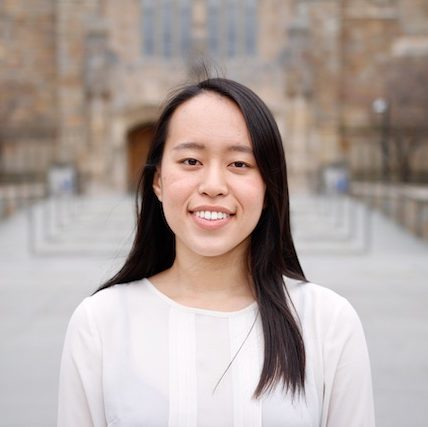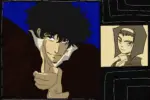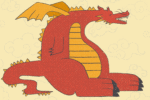The rise in popularity of Japanese anime and East Asian drama for Western audiences has also brought with it a particular trope: the reverse harem. Just as a harem is made up of one man with multiple women, a reverse harem consists of one female protagonist and three or more male love interests. However, this is not a situation where the woman must pick her one true love by the end of the story; instead, the woman simply enters into relationships with … several (if not all) of them.
The reverse harem narrative is not too far from a typical romance; the heroine meets her man, establishes a strong connection and eventually falls in love. Just rinse and repeat, a few more times. In contrast to love triangles, where the main character is forced to make a heart-wrenching decision at the end, the reverse harem neatly side-steps this emotional anguish by creating a dynamic where the heroine does not have to choose. The men’s love for the heroine is enough to get them all to agree to share. Put together, they create an unorthodox family of sorts.
The reverse harem originated as a common trope of Japanese otome games (otome meaning girl/maiden), anime and manga. In these otome dating games, you can select the route of your chosen guy and interact with them in the ensuing story. This romance between a woman and multiple men can also be found in many beloved shows and visual novels since the early 2000s, such as “Ouran High School Host Club,” “Diabolik Lovers” and “The Wallflower.” More recently, the popular webtoon “Men of the Harem,” which has over a million readers, also depicts the classic elements of a reverse harem, with one woman being the object of affection for multiple suitors.
In Western media, there is no comparative breakthrough of this romance subgenre, aside from a few published novels such as the “Ghost Bird” series by C.L. Stone. Furthermore, there is no exact parallel to the reverse harem trope in most major Western films and literature — “The Bachelorette” doesn’t count since the leading lady still has to pick only one guy at the end.
Although polyamory stories come close, reverse harem is a separate concept because there can be no possibility of outside relationships (you can’t have potential challengers to a harem!) and all the members of the group are wholly dedicated to the main protagonist. Furthermore, the reverse harem trope is strongly associated with the romantic dating aspect of a relationship, in stark contrast to polyamory, which often has a sexual focus in Western media.
While sex may be included in the story, how the relationship develops and the attention focused on the female protagonist are the main factors of a reverse harem. Moreover, the men in a reverse harem do not necessarily need to be friends or get along with each other. Villains in the story can turn into love interests. Men may fight over the main character. They may not like the main character’s choice to be with other people, but they will accept it.
If polyamory is an interconnected web of attractions and attachments between all group members, then in comparison, the reverse harem is a one-way street, where the main character is essentially in a relationship with three or more men at the same time.
Harem tropes essentially serve as a form of wish fulfillment for the audience stand-in protagonist because, honestly, who wouldn’t want to be desired by many? In that sense, the focus of a reverse harem is not how attractive or talented the girl is, but how unbelievably handsome the men in her harem are. It appeals to the demographic of the millions of young women who want to be adored and cherished by a legion of attractive, fit men.
Speaking of the suitors, these men, though distinguishable by their hair color, are largely similar in that the main feature of their personality is just being stunningly handsome and ultimately devoted to the main protagonist. Furthermore, these men usually fall into one of the stereotypical categories: the brooding main hero, the shy wallflower, the Casanova, the big-brother type, the friendly athletic one or the lone wolf.
For instance, in “Ouran High School Host Club,” the characters each assign themselves a “type”: Takashi Morinozuka is the “Strong-Silent” type, Tamaki Suoh is the “Princely” type and Kyoya Ootori the self-assured “Cool” type. You can also see this in “Uta no Prince-sama,” “La Corda D’Oro” and “Yona of the Dawn.”
It’s perfectly fine to indulge in some shameless wish gratification, but it’s also important to remember that reverse harems remain rooted in fantasy and its themes are often dissonant with reality. The problem with a reverse harem lies not in the polyamory or self-insert issue, but rather is rooted in how female characters are depicted in harem and reverse harem manga and anime. These portrayals may affect how young girls and women perceive themselves and their approach to future romantic, likely heterosexual, relationships.
By its nature as a harem, there can be no challengers to the lead. Meaning, all other women in the show or manga in a reverse harem must be reduced to background characters or villains who threaten the relationship between the main character and their love interests. The heroine is pitted against these flat villainesses, whose only role is to irrationally make life difficult for the heroine rather than helping them grow convictions or establish ideals. The only characters who can provide comfort or understanding, by virtue of gaining affection and furthering the romance plot, must be the men.
This may signal to young women to adopt this expectation for real-life relationships, relationships that hinge entirely on the partner giving 100% of their attention, and that all other women in the partner’s life must be adversaries. The harem genre is problematic in terms of how young female readers and viewers understand being a man, woman and the very nature of real relationships.
Other problems with the reverse harem are that more often than not, the main character is a flat, static character. All potential character growth and conflicts come from the men fighting with each other or dealing with multiple lovers, rather than the focus on the protagonist growing as an independent, capable being. Or, the drama might come from another man being introduced into the story, whose original intention was to mess up the harem, but the resolution of this conflict will inevitably be joining the harem.
The draw of the main character often ends up being a “special” trait that all other characters simply do not have. Whether it is an ethereal, unrealized beauty, the rareness of being utterly ordinary in a school of gods, or a self-insert, Mary Sue type of character, the reverse harem genre, unfortunately, caters more toward an increasingly attractive slew of men over any substantial character growth.
Furthermore, the plot of reverse harems pushes the damsel-in-distress act. The main character obviously cannot save herself because the man needs to be there to pull her out of the life-threatening situation and subsequently gain her affection.
As such, by nature of Plot Device™, the main character cannot do anything without the help of a man — she is easily deceived, often falls into traps, cannot think for herself and must rely on her harem members to help her make decisions. Essentially, it’s the flaws that often come from love triangles (looking at you, K-dramas), but multiplied exponentially.
Even in traditional (e.g., male-oriented) harem manga and anime, the average male protagonist can develop into a strong leading man. The reverse harem female protagonist remains static, with little to no characterization except to emulate typical feminine stereotypes such as being kind, patient, virtuous and loving. Typical examples of these reverse harem heroines include Yui Komori of “Diabolik Lovers,” Ema Hinata of “Brothers Conflict” and Ritsuka Tachibana of “Dance with Devils.”
However, there are shows and manga that are able to do this trope well. In “Men of the Harem,” Latil is thrown into power after the mysterious assassination of her father and must deal with the tests of character that come with the day-to-day running of an empire and political intrigue. Latil must marry to secure her sovereignty of Tarium, but instead of choosing one man to become her royal consort, she chooses five young men, citing past precedent from male emperors.
From the onset, she shows that she’s a force to be reckoned with as she refuses to back down from consolidating her influence simply because of social expectations for women. Her suitors are attracted to her not just for her beauty, but because of her clear physical, political and emotional strength.
Haruhi Fujioka of “Ouran High School Host Club” and Sunako Nakahara of “The Wallflower” both reject traditional markers of femininity in favor of expressing their true identities. Fujioka has a gender-ambiguous appearance, which works in her favor as a host in the Host Club, in addition to her preference for male clothing and adopting a masculine persona. Nakahara subverts female stereotypes by forgoing conventional beauty practices and feminine hobbies. The main love interests of Fujioka and Nakahara, Tamaki Suoh and Kyohei Takano respectively, fall in love with them regardless of their adherence to gender norms.
In that sense, the reverse harem genre has the potential to show and guide young, impressionable readers with character aspects that empower the readers rather than dictate what is needed in order to be “attractive” to the male gaze. A female lead can display stereotypically masculine traits of ambition, dominance and occupying a position of power while still being attractive.
Media such as “Men of the Harem” does this well, as the female lead wields a large amount of influence by her own right, and interactions with the male love interests are based on equal footing. Similarly, “Ouran High School Host Club” features a protagonist that is completely devoid of economic, social or political power due to her status as a “commoner,” but makes up for this imbalance by charming her way up through her independent spirit, dry humor, hard work and natural talent as a host.
A story with a reverse harem, if properly executed, can be fascinating, entertaining and romantic, but if these tropes — an uninteresting heroine, flat villains, lack of character growth and an unhealthy reliance on the love interests to solve problems — continue to persist in this subgenre, then the reverse harem can do more harm than good.

















